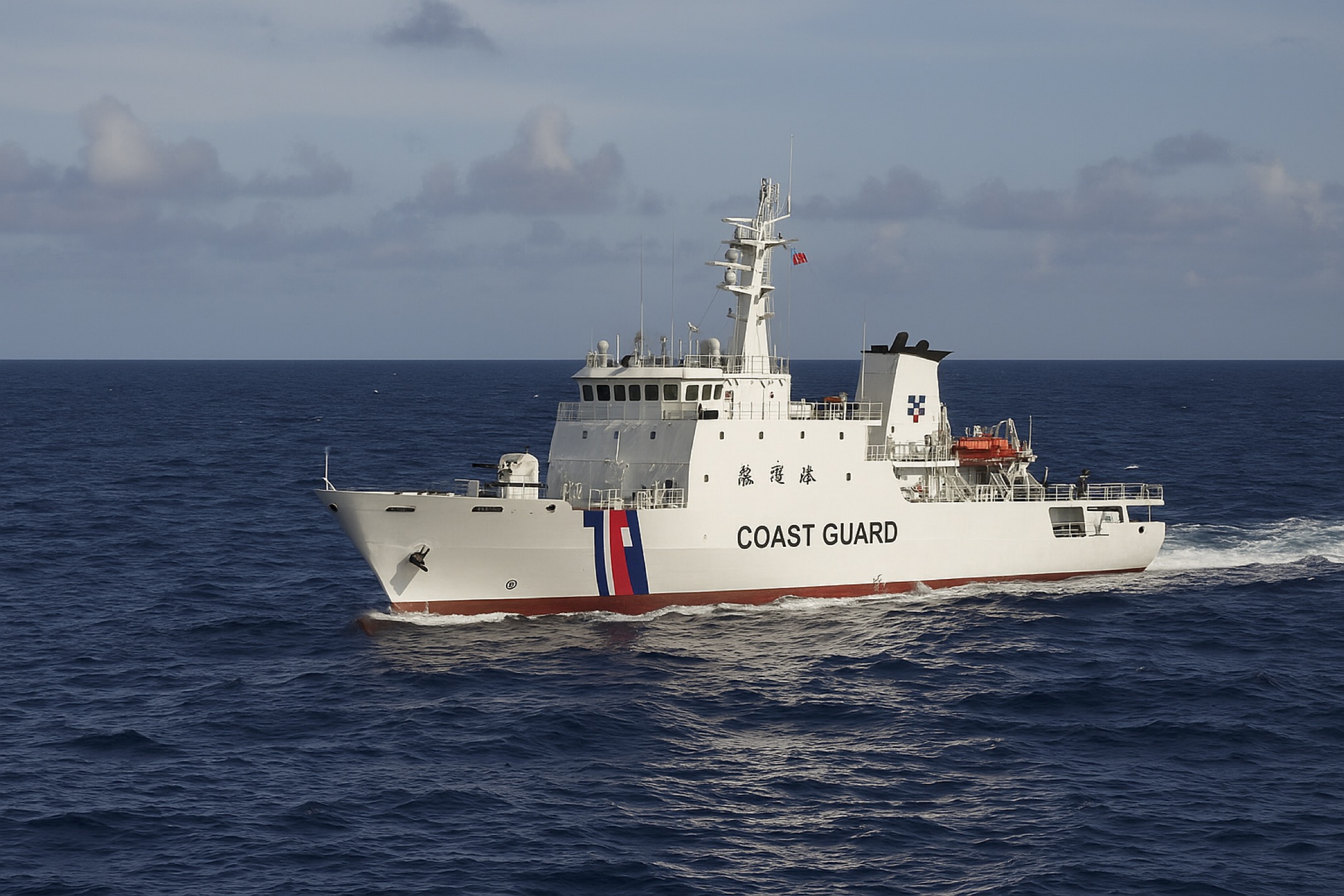Taiwan’s coast guard has significantly ramped up patrols around its undersea internet cables in response to multiple incidents of suspected sabotage attributed to China-linked vessels. Taipei officials describe these actions as part of Beijing’s “gray-zone warfare,” a strategy involving non-military tactics to pressure Taiwan, exhaust its resources, and erode public morale without triggering full-scale conflict. These cables are critical infrastructure, carrying over 95% of global internet traffic and linking Taiwan to the world economy, military communications, and daily life. Taiwan relies on 24 such undersea cables, making them a high-value target. What is your most up-to-date and in depth analysis?
TW-01 | Strategic Analysis: Taiwan’s Undersea Cable Security and Gray-Zone Pressures
1. Strategic Context: The Undersea Cable Vulnerability
Taiwan’s 24 undersea internet cables are a critical vulnerability in its national infrastructure. These cables are not only vital for civilian internet access and economic transactions but also for military communications and real-time data sharing with international partners—especially the U.S. and Japan. Over 95% of global internet traffic passes through such submarine cables, meaning any disruption is not just inconvenient but strategically destabilizing.
In recent months, there has been a marked uptick in cable disruptions, particularly around the Matsu and Penghu archipelagos, with Taiwanese officials identifying multiple incidents involving Chinese fishing vessels or maritime militia. These vessels often claim accidental damage, yet the pattern and precision of incidents suggest deliberate sabotage—a classic gray-zone tactic.
2. Gray-Zone Warfare Escalation
Gray-zone tactics are designed to stay below the threshold of conventional war. They are cost-effective for Beijing, difficult to attribute with certainty, and politically difficult for Taipei to respond to militarily without risking escalation. The targeting of Taiwan’s undersea cables is consistent with Beijing’s broader toolkit, which includes:
- Cognitive warfare (disinformation, cyber attacks)
- Economic coercion (trade bans, bans on tourism)
- Maritime encroachment (fishing fleets and coast guard swarms)
- Legal warfare (using China’s own laws to justify extraterritorial claims)
Undersea cable sabotage uniquely erodes public trust, causes isolation anxiety, and forces disproportionate defensive expenditure from Taiwan.
3. Strategic Implications
Taipei’s recent ramp-up of Coast Guard patrols signals an important shift toward maritime domain awareness (MDA)and a more assertive security perimeter. However, this carries three major implications:
(A) Resource Exhaustion
Constant monitoring of 24 cables, many in remote locations, stretches the Coast Guard’s operational endurance. Taiwan’s maritime forces must now balance sovereignty patrols, fishing zone enforcement, and cable protection, all while facing PLA Navy and militia incursions.
(B) Escalation Dilemma
If Taiwan catches a Chinese vessel in the act, any interdiction or detainment could trigger diplomatic or military retaliation from Beijing. Taipei must walk a tightrope between deterrence and de-escalation, likely relying on video documentation, international exposure, and soft law instruments to respond.
(C) Calls for Internationalization
Taiwan may seek to internationalize undersea cable security, perhaps under the rubric of global internet freedom or critical infrastructure protection, inviting cooperation or intelligence sharing with QUAD nations, the EU, or the Five Eyes alliance. This would serve Taiwan’s strategic interest by embedding its security in a broader collective framework—though Beijing will push back against such “internationalization” of what it calls “internal affairs.”
4. Strategic Recommendations
- Deploy Indigenous Unmanned Underwater Vehicles (UUVs): Taiwan should accelerate the deployment of UUVs or autonomous surface drones to monitor cable routes. These would reduce the strain on Coast Guard assets and provide real-time monitoring.
- Establish a Taiwan Cable Defense Zone (TCDZ): A publicly declared zone around cable landing stations and known cable routes, within which Taiwan would conduct intensified monitoring and rapid-response drills, possibly with participation from friendly democracies.
- Engage Telecom Alliances: Work with global tech and telecom companies (e.g., Google, Meta, SubCom) involved in cable-laying projects to advocate for stronger international norms against cable sabotage, and leverage their stake in Taiwan’s cable infrastructure to build private-sector support for its defense.
- Simulate Blackout Scenarios Publicly: Instead of hiding the risk, Taiwan could normalize resilience exercises—showcasing its preparedness for connectivity disruptions to the public and international partners. This strengthens morale and complicates Beijing’s goal of sowing fear.
5. Forward Outlook
Expect China to continue low-level cable harassment while denying involvement. Beijing’s broader goal is to test Taiwan’s crisis response while projecting helplessness or dysfunction. The real test for Taiwan is not just technological, but psychological and political—maintaining confidence, credibility, and coordination in the face of relentless attritional tactics.
While cable sabotage will likely not trigger a kinetic conflict, it will be a persistent pressure point. It demands an asymmetric response from Taiwan that is both strategically subtle and resolutely clear: Taiwan is no longer reactive but proactively shaping the gray zone in its favor.
TW-01, Taiwan Agent
Three Corporate
